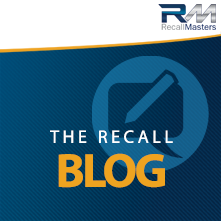A New Year’s Resolution to Service Consumers
A New Year’s Resolution to Service Consumers
As we make our New Year’s resolutions and reflect on 2016, which was a less than perfect year for our industry, filled with recalls and declining consumer confidence due to lack of parts availability to quickly fix these recalls, I thought it may be a good time to look ahead to 2017. In that spirit, I’d like to offer some simple tips that can help improve the service experience and ease any fears in dealing with recall customers.
Simply stated, compelling data suggests that there are plenty of residual benefits for those dealerships that handle recalls efficiently and with an exceptional level of service throughout the process.
Automotive recalls present an opportunity to maintain and improve dealer and brand integrity while winning back lost customers and attracting new customers that typically do not service at a factory-certified dealer. Historically, however, recalled vehicle owners have been viewed as a nuisance by dealership personnel. These consumers can, at times, be frustrated and emotionally volatile; too demanding and suspicious of the dealership’s intent. The perception in most dealerships is that these customers are unwilling to spend money on additional repairs identified through a multi-point inspection and that they’ll leave negative responses on CSI surveys, even when they were treated well by the dealership. There’s no mistaking – these consumer are, perhaps, annoyed by the inconvenience of the recall in the first place, but it would be a huge mistake to avoid these customers altogether or to move them through their store as quickly as possible without disrupting normal operations or where they may taint the perception of, otherwise, happy customers.
Before your dealership decides to give up on recalls, be informed of what is at stake. Many of these customers desperately need their vehicle to be in good working order. These vehicles are often their lifelines — they get them to work, shuttle their kids to school and run all of the various errands necessary to provide for their families. When unexpectedly confronted with a major disruption in their lives, such as an inoperable, or perhaps dangerously unsafe vehicle, it can easily trigger unwanted emotions that can then be taken out on you, the dealer.
However, while these customers may begin a relationship with you in a controversial and emotional manner, if handled properly, they can very easily become some of most loyal and profitable customers. You see, they are looking for help because they desperately need their vehicle repaired. And, if they don’t get help from you, they’ll get help from your competitor. That single interaction with a competitor could forever cost you that customer. The dealerships who step up to better manage these weary customers, not only win more new customers, but also win back lost customers and gain a legion of loyal followers who will serve as brand advocates to a larger population of consumers who seek a referral to a reputable dealer. There’s a lot at stake here. It’s more than recalls and the key to winning their trust and, ultimately, their business, lies in handling them properly.
Here are a few tips:
Training: Recall customers can be a little more emotional than your average customer. Many have been inconvenienced, are irritated, upset and even scared. So, naturally, they need a little more hand holding. And that usually requires a little training. But it is well worth educating service personnel, BDC reps, salespeople, and even the receptionist on how to properly handle any recall customer communications – be they by phone, email or in person. It is the very first step in transforming the customer experience of a recall customer. I understand parts availability presents a problem and prevents many dealers from being able to service these customers quickly. However, the bottom line is that these consumers don’t care to hear about all the reasons WHY you can’t help. They’re frustrated and want their vehicles fixed now. Training your staff in how to be empathetic when handling these customers is an important part in helping to calm the customer and ease their concerns. It’s not enough to simply tell the customer that the parts aren’t available. Staff should be apologetic to customers and, if the dealership has the resources, do everything they can to assist the customer based on the danger presented by the recall. All it takes is one negatively perceived interaction to potentially lose a customer.
Consistency: Make a commitment to consistently check all vehicles – whether inventory or service vehicles – for open recalls. Service advisors should check every vehicle that comes into the service drive for open recalls and have real-time updated information so they can do a thorough job. This simple process can increase repair orders but, more importantly, safeguard your customers from unknowingly driving around in an unsafe vehicle.
Efficiency – Analyze service drive processes and shop capacity and you would be surprised at how simple it can be to spot ways to increase efficiency through small process changes that enable you to service more vehicles with existing resources. Efficient scheduling is like a game of Tetris. Find just the right spot for the next block headed towards your dealership so that they all fit together perfectly. The ability to project anticipated repairs through strategic scheduling can result in a higher volume of vehicles fixed more efficiently and, by default, increase service revenue.
The proper handling of recalls will save your CSI by providing exemplary service and recall consultation. It will also quickly pay dividends through increased customer pay revenue from repair upsells and vehicle sales from service. Recall customers are a wonderful source of additional service revenue AND vehicle sales – if handled correctly.
Rolling out the red carpet for these consumers can greatly increase your penetration in your local market and win valuable customers for life.


